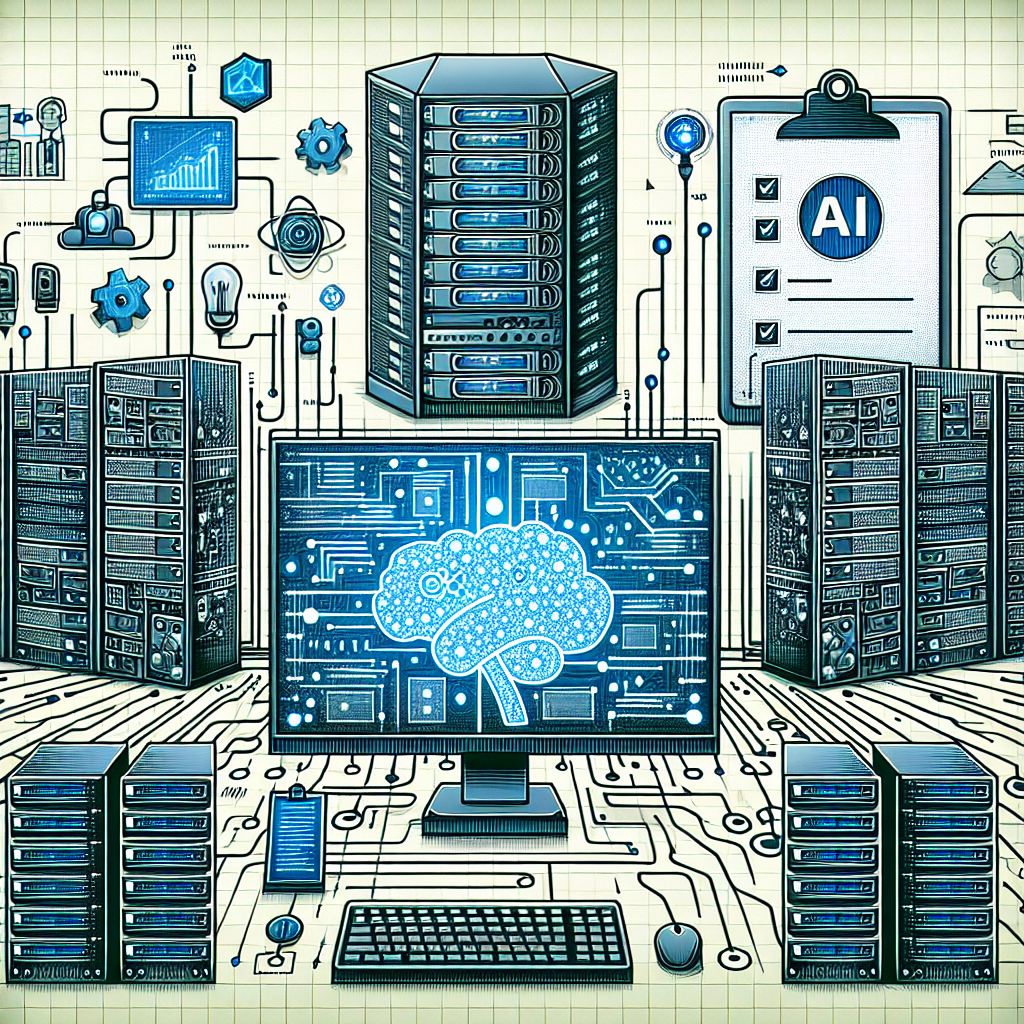Leveraging Kubernetes for Scalable AI Workflows: Technical Insights and Best Practices

```html
As artificial intelligence (AI) continues to transform industries, the need for seamless integration and robustness in AI workflows has become evident. One of the key challenges in the AI development lifecycle is managing and scaling workloads effectively. Enter Kubernetes, an open-source container orchestration platform that automates the deployment, scaling, and management of containerized applications, including AI models. This blog post will delve into the technical aspects of Kubernetes, its core components, and its applications in AI. We will also explore real-world success stories and best practices to help you leverage Kubernetes in your AI projects.
1. Introduction to Kubernetes
Kubernetes, often abbreviated as K8s, was originally developed by Google and is now maintained by the Cloud Native Computing Foundation (CNCF). It provides an open-source platform for automating the deployment, scaling, and operation of application containers across clusters of hosts.
Technical Details:
- Container Orchestration: Kubernetes manages the scheduling of containers on a cluster, ensuring efficient resource utilization and high availability.
- Auto-Scaling: Automatically adjusts the number of running containers based on demand, using horizontal pod autoscaling (HPA) and vertical pod autoscaling (VPA).
- Service Discovery and Load Balancing: Manages internal and external traffic to containers, with built-in load balancing and service discovery features.
- Self-Healing: Automatically restarts containers that fail, replaces and reschedules containers when nodes die, and kills containers that don't respond to health checks.
- Secret and Configuration Management: Securely manages sensitive information and configuration details across your containerized applications.
2. Key Components of Kubernetes
Kubernetes comprises several key components that work together to manage containerized applications:
- Nodes: The worker machines in Kubernetes, where containers run. Each node contains the services necessary to run containers and is managed by the master components.
- Pods: The smallest and simplest Kubernetes object. A pod represents a single instance of a running process in your cluster, often containing one or more containers.
- Deployments: Define the desired state of your application, managing the deployment and updates of pods to reach and maintain that state.
- Services: An abstraction that defines a logical set of pods and a policy by which to access them, often aligned with microservice architectures.
- ConfigMaps and Secrets: Store configuration data and sensitive information, respectively, which can be mounted into pods at runtime.
- Ingress: Manages external access to services, typically HTTP, providing load balancing, SSL termination, and name-based virtual hosting.
3. Real-World Applications
Kubernetes is widely adopted across various sectors, enhancing the efficiency and scalability of AI workflows:
- Healthcare: Facilitates the deployment of AI-driven diagnostic tools, ensuring high availability and scalability to handle large volumes of patient data.
- Finance: Enables the deployment of AI models for fraud detection and risk analysis, ensuring continuous operation and responsiveness to market changes.
- Retail: Supports recommendation engines and real-time inventory management systems, optimizing the shopping experience and operational efficiency.
- Manufacturing: Used for predictive maintenance models that analyze equipment data to forecast failures and optimize production schedules.
4. Success Stories
Several organizations have successfully implemented Kubernetes to enhance their AI projects:
- Spotify: Utilizes Kubernetes to manage the deployment of machine learning models for music recommendations, ensuring seamless scaling and resource management.
- Airbnb: Leverages Kubernetes for orchestrating its machine learning models, enabling rapid deployment and scaling to handle fluctuating user demands.
5. Lessons Learned and Best Practices
Integrating Kubernetes into your AI workflow requires a strategic approach. Here are some best practices and lessons learned:
- Modular Architecture: Design your AI applications with modularity in mind, breaking down complex workflows into manageable microservices.
- Resource Limits: Set resource limits and requests for pods to ensure optimal resource utilization and prevent resource contention issues.
- Use Helm: Helm, the package manager for Kubernetes, simplifies the deployment and management of complex applications by using reusable charts.
- Monitor and Log: Use monitoring tools like Prometheus and Grafana to track the health of your Kubernetes cluster and logging solutions like ELK stack for troubleshooting.
- Automate CI/CD: Integrate your Kubernetes deployment with Continuous Integration and Continuous Deployment (CI/CD) pipelines for automated testing, deployment, and rollback of changes.
- Security Practices: Employ best security practices, such as using RBAC (Role-Based Access Control), network policies, and securing sensitive data with secrets management.
Conclusion
Kubernetes is a powerful platform that simplifies the complexities of deploying and managing AI workflows. By integrating Kubernetes into your AI projects, you can achieve enhanced scalability, reliability, and ease of management. Understanding the technical intricacies and best practices related to Kubernetes will enable you to leverage its full potential, ultimately driving more efficient and effective AI initiatives. Whether in healthcare, finance, retail, or manufacturing, Kubernetes can significantly elevate your AI deployment strategy, leading to better performance and robustness in your applications.
```



